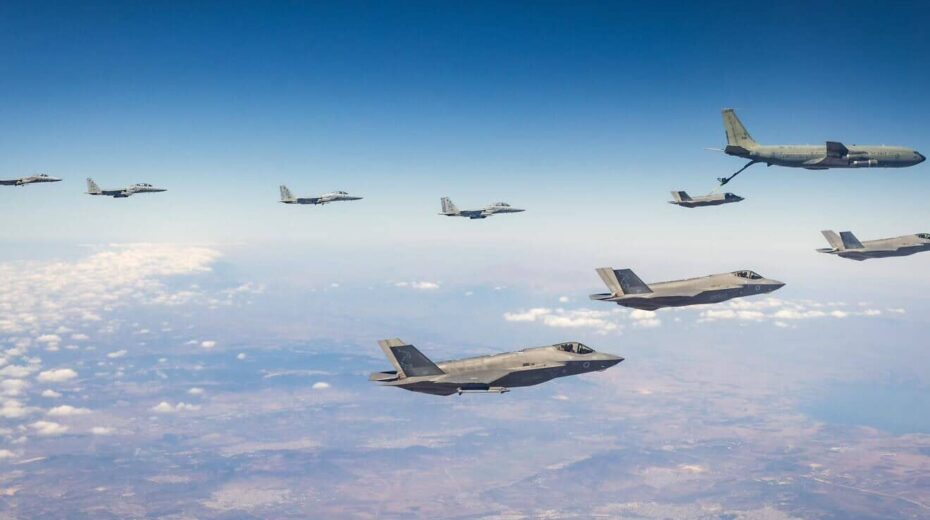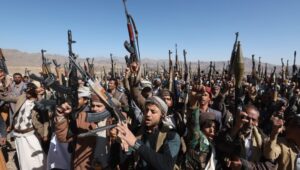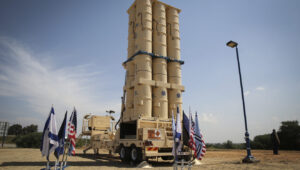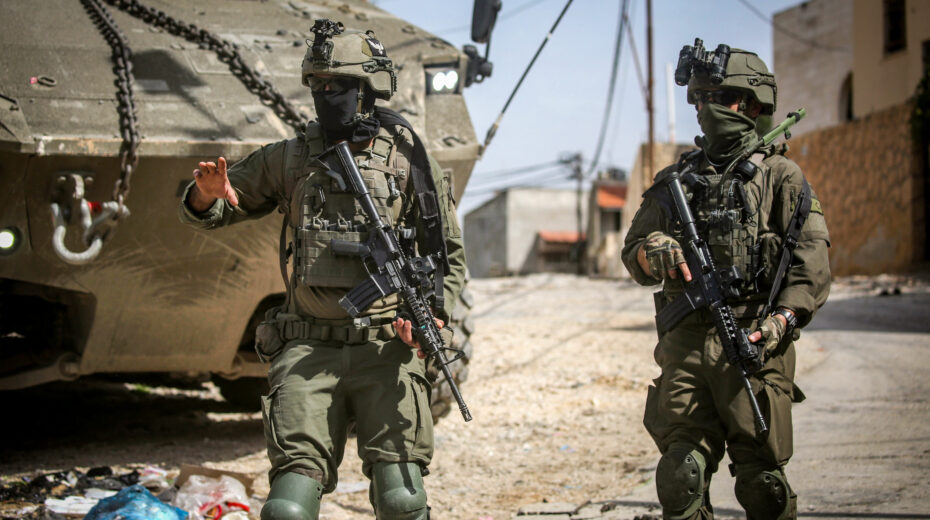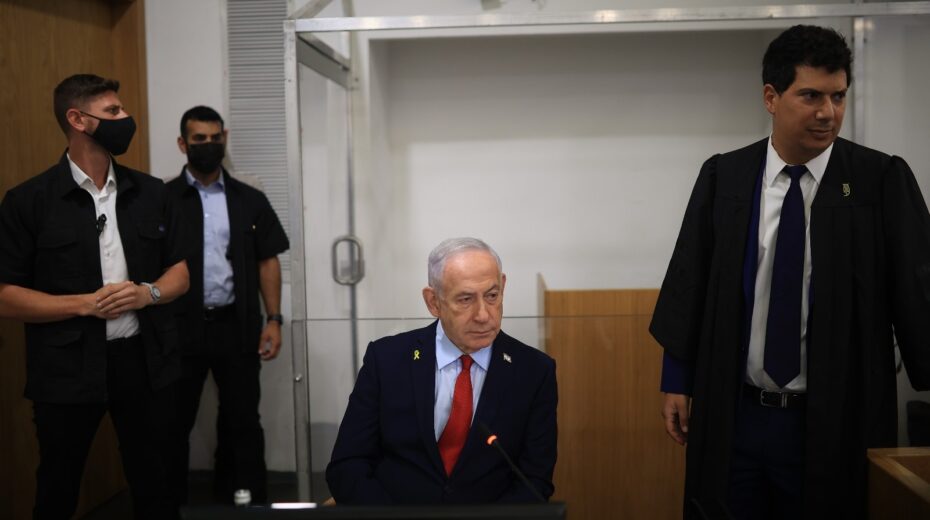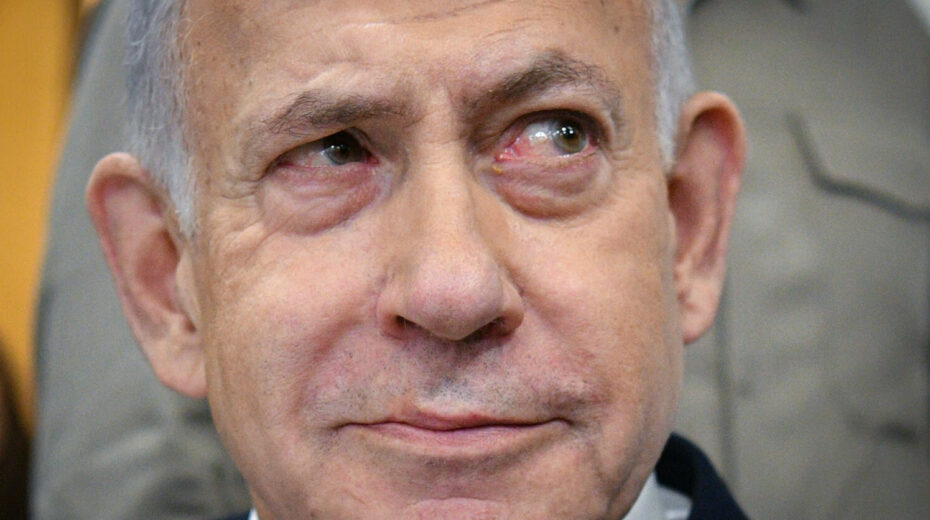The Israeli Air Force struck Houthi targets in Yemen overnight Wednesday, after intercepting a missile over central Israel fired by the Iranian-backed terror group.
A school in the Ramat Efal neighborhood of Ramat Gan, just east of Tel Aviv, suffered severe damage when it was hit by interceptor shrapnel. According to the mayor, the impact caused a partial collapse of the central building, prompting the cancellation of classes for the day.
The IAF strikes were carried out by 14 fighter jets, along with refuelers and spy planes, and were carried out in two waves, according to the IDF.
The jets were already en route to Yemen when the Houthis launched the ballistic missile at around 2:35 a.m. The first wave of strikes occurred at 3:15 a.m., targeting the Ras Isa oil terminal on the Red Sea as well as the Hodeidah and Salif ports. Eight tugboats, used for guiding ships into the ports, were also destroyed.
At 4:30 a.m., the second wave targeted the Yemeni capital of Sana’a, hitting two power stations.
Houthi-affiliated media reported casualties in the Israeli attacks.
The IAF has reportedly struck Houthi targets in Yemen pic.twitter.com/C1iJ3NotQC
— Jewish News Syndicate (@JNS_org) December 19, 2024
“Over the past year, the Houthi terrorist regime has been operating with the direction and funding of Iran, and in cooperation with Iraqi militias, in order to attack the State of Israel and Israeli civilians,” the IDF stated following the strikes.
“The conducted strikes degrade the Houthi terrorist regime, preventing it from exploiting the targets for military and terrorist purposes, including the smuggling of Iranian weapons to the region,” the statement continued. “The IDF is determined to continue operating against all threats posed to the citizens of the State of Israel, wherever necessary.”
Israeli Defense Minister Israel Katz warned Houthi leaders after the overnight operation that “the long arm of Israel will reach you. Whoever raises a hand [against us] will have it severed. Whoever harms [us], will be harmed many times over.”
Israeli President Isaac Herzog commended the IAF operation in an X post on Thursday morning.
“In the last few hours, we have seen the tremendous ability and bravery of the Israeli Air Force, defending our people against an attack by the Iranian terrorist proxy, the Houthis in Yemen, and striking them with powerful force,” Herzog wrote.
“I thank each of the brave servicemen and women of the Israeli Air Force and the IDF for defending our people from terrorists who seek to terrorize Israel and the Middle East,” he added.
In the last few hours, we have seen the tremendous ability and bravery of the Israeli Air Force, defending our people against an attack by the Iranian terrorist proxy – the Houthis in Yemen – and striking them with powerful force.
I thank each of the brave servicemen and women…
— יצחק הרצוג Isaac Herzog (@Isaac_Herzog) December 19, 2024
On Monday, a Houthi missile triggered air-raid sirens in the greater Tel Aviv area. Israel’s Magen David Adom emergency response group said it had treated five people who were lightly injured while running for cover.
Shrapnel from the ballistic missile launched by the Iran-backed Houthi terrorists in Yemen hit an elementary school in the Ramat Efal neighborhood of Ramat Gan, east of Tel Aviv. pic.twitter.com/2StR1cbXq9
— Israel War Room (@IsraelWarRoom) December 19, 2024
Earlier on Monday, an Israeli Navy ship intercepted a Houthi drone over the Red Sea before it crossed into Israeli territory.
🚨Sirens sounding across central Israel🚨 pic.twitter.com/YDKFXFMXmy
— Israel Defense Forces (@IDF) December 19, 2024
On Dec. 9, a Houthi drone hit a residential high-rise building in the central Israeli city of Yavne, northeast of Ashdod. On Dec. 1, a ballistic missile launched from Yemen triggered sirens in the Judean foothills. The missile was intercepted before entering Israeli airspace, the IDF said. Four people were injured running to shelters, according to Magen David Adom.
⭕️ IAF fighter jets struck military targets belonging to the Houthi terrorist regime on the western coast and in inland Yemen.
Over the past year, the Houthi terrorist regime has been operating with the direction and funding of Iran, and in cooperation with Iraqi militias in… pic.twitter.com/hYNRstbhxP
— Israel Defense Forces (@IDF) December 19, 2024
The Iran-backed Houthi rebels have launched over 200 missiles and 170 drones at Israel in support of Hamas since the Gaza-based terrorist group’s Oct. 7, 2023, massacre in the northwestern Negev. The vast majority did not reach Israel and were intercepted outside of Israeli territory by Israel or the US.
In July, a Houthi drone killed a civilian in central Tel Aviv. In response, Israel struck Yemen’s Hodeidah Port.
On Sept. 29, the Israeli Air Force carried out dozens of strikes in the area of Hodeidah. The targets included “power plants and a seaport, which were used by the Houthis to transfer Iranian weapons to the region, in addition to military supplies and oil,” the IDF said.
דיווח: ישראל תוקפת בתימן | תיעוד@ItayBlumental pic.twitter.com/Ae1dfm0Dg0
— כאן חדשות (@kann_news) December 19, 2024
“The Houthis are also targeting other countries—in the Middle East, the United States and other countries in the world,” IDF Spokesman Daniel Hagari noted.
“With their attacks on international shipping vessels and roots in the Red Sea and other places, the Houthis have become a global threat. Who is behind the Houthis? Iran. The regime in Iran funds, arms and directs the Houthi’s terror activities,” he continued.
“As we have shown against other enemies in other arenas, we will continue to act against anyone—anyone in the Middle East that threatens the State of Israel, and we will defend the people of Israel,” Hagari concluded.


